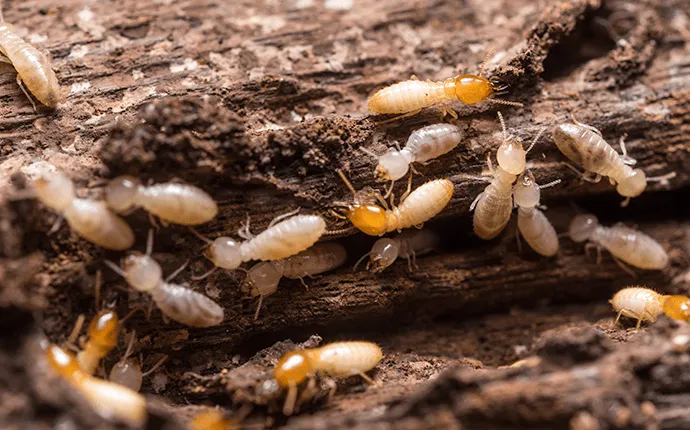Basements are great for storage, but they can also be a great place for bugs…

Homeowner’s Guide to Subterranean Termites
July 19, 2018
You are probably aware that termites can cause extensive damage to the wood of homes and that they should be avoided, but there is so much more information about these destructive pests that homeowners need to be aware of in order to avoid a termite infestation, including what to do if you see signs of them in your home. The climate in North Carolina provides the perfect conditions for termite populations to thrive, which is why homeowners in North Carolina experience a large number of termite invasions and costly termite damages each year.

Termites are quite beneficial to the environment when they remain outdoors in their natural habitat, primarily in wooded areas as they can make quick work of converting materials that contain cellulose into nutrients that can enhance the soil. It is extremely dangerous when termites turn to homes and other structures for their sustenance, however; once these destructive pests gain access to your home, they will begin eating any and all wood they can find within your home without you even knowing and can continue to do so for months and sometimes even years without being noticed. In fact, you may not hear them, see them, or notice any signs of their presence until it is too late!
Types of Subterranean Termites
Subterranean termite colonies are broken into classes; these classes determine which job the termites will perform in order to manage the colonies:
- Worker Termites: The largest of these classes, Worker termites are a soft, creamy white color, wingless, and are blind, but they manage to gather food for the entire colony. When living outdoors, termites will eat rotten wood, leaves, and other vegetation. Once inside, they will feed on wooden furniture, wallboards, structural beams and other wooden items.
- Soldier Termites: Larger than the workers and are responsible for defending their territories against attack. The largest members of the colony are the kings and queens.
- Reproductive Termites: Also known as swarmer termites or alates, these termites have wings that allow them to swarm and find a mate. After these termites find a mate, their wings fall off and they find a place to begin a new colony.
Signs of a Termite Infestation
While subterranean termites usually live outside, they may find their way inside homes while looking for more wood to devour. Here are some common signs of a subterranean termite infestation:
- Mud tubes that they use to travel back and forth from their colony to their food source; these tubes are about the width of a pencil and can usually be found near foundations and walls.
- Discarded swarmer wings on window sills or porch railings.
- Flying insects that look like winged ants swarming around your home.
- Damaged wood that has exit holes in it or sounds hollow when tapped, or piles of sawdust-like feces in or around your home.
Preventing Termite Infestations
To help prevent termites from invading your home:
- Avoid wood-to-soil contact around your home.
- Keep your yard tidy and free of piles of wood,leaves, or other organic debris.
- Fix any leaky pipes or fixtures that cause excess moisture or result in water damage that attracts termites.
- Reduce moisture levels in your home to help deter termites from invading.
- If you have any water-damaged wood in your home, you should replace it immediately.
In order to fully eliminate a current termite infestation or to avoid termites and the damages they cause altogether, enlist the help of the termite control experts at A-1 Pest Control! We specialize in termite control and offer comprehensive solutions to termite problems that are highly effective. Give us a call at A-1 Pest Control today to learn more about our expert termite control options!
Related Posts
- A Guide to Basement Bugs & Critters
- What Kills Termites
Any insect infestation is cause for alarm, but a termite invasion is especially stress-inducing. Not…
- What Kills Termites
Any insect infestation is cause for alarm, but a termite invasion is especially stress-inducing. Not…
